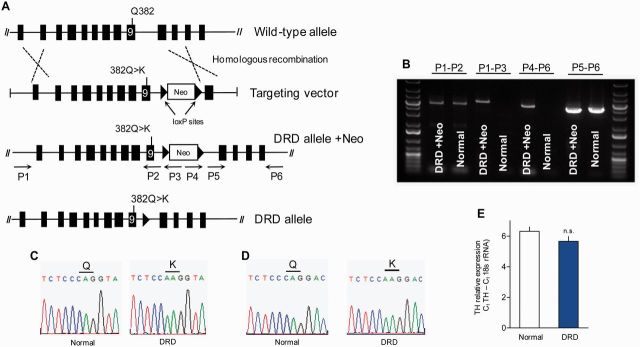Figure 1.
Generation and molecular characterization of the DRD allele. (A) Schematic of the targeting construct encoding the c.1160C>A mutation in exon 9 of Th, and a neomycin resistance cassette (Neo), flanked by two loxP sites. (B) Results of long PCRs confirming the correct genomic location of the targeting construct. Arrows in A indicate direction and approximate position of primers used to verify homologous recombination; primers P1 and P6 were to genomic DNA outside of the targeting construct. PCR products (4–6 kb) amplified from knock-in (DRD + Neo) and normal mouse genomic DNA correspond to the indicated primers. (C) Sequences obtained from PCR amplicons from genomic DNA verifying the C>A point mutation in Th. (D) Sequence of the reverse transcription-PCR amplicon from brain mRNA illustrating mRNA expression of the c.1160C>A mutation. (E) Quantitative RT-PCR demonstrated no difference in the quantity of Th mRNA between normal (n = 8) and DRD mice (n = 8; P > 0.1, Student’s t-test). Values represent mean ± SEM.

